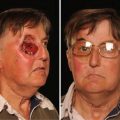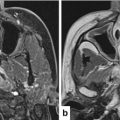Assessment of functioning
Social assessment
Definition: ability to live independently at home and in the community, physical performance (mobility, balance, fall risk)
Definition: adequate social support to undergo treatment
Measurement: ADLs, IADLs, history of falls, Timed Up and Go, Short Physical Performance Battery, handgrip testing
Measurement: needs assessment of financial capabilities, transportation, and caregiver status; Medical Outcomes Survey Social Support
Medical assessment
Psychological assessment
Comorbidity and medication
Cognition
Measurement: Charlson Comorbidity Scale, Adult Comorbidity Evaluation 27, Cumulative Illness Rating Scale-Geriatrics, comorbidity count and severity, medication count, Beers Criteriaa
Measurement: Mini-Mental Status Examination, Blessed Orientation Memory Scale, Short Portable Mental Status Questionnaire, Montreal Cognitive Assessment
Nutritional status
Depression and anxiety
Measurement: Mini-Nutritional Assessment, weight loss, body mass index
Measurement: Geriatric Depression Scale, Hospital Anxiety and Depression Scale
However, owing to the fact that a CGA is time-consuming and not necessary for all patients, it is rarely performed in oncology practices. Consequently, a two-step approach has been developed furnishing clinicians with geriatric screening tools to decide: (1) which patients will need a full assessment, (2) who will benefit from a specific examination and (3) in which cases no further testing is required.
Geriatric Screening Tools
Several geriatric screening tests have been used in oncology including the G8, the Flemish version of the Triage Risk Screening Tool (fTRST), the Groningen Frailty Indicator, the Vulnerable Elders Survey-13 (VES-13) and an abbreviated CGA. The G8 and the fTRST were prospectively validated in a non-interventional, multicentre study. Both instruments demonstrated high sensitivity and moderate negative predictive value to identify patients with a geriatric risk profile. Moreover, they were prognostic for overall survival, especially the G8 [26]. In a recent update on SIOG recommendations, a systematic review of 44 studies on the use of 17 different screening tools was reported. The G8 proved to be more or equally sensitive than other tests. The authors concluded that the screening tools should not replace a full assessment. However, a busy practice setting entitles the physicians to use them for triage decisions prior to a CGA [29].
Stratifying elderly head and neck cancer patients according to the VES-13 test into frail, vulnerable and fit cohorts, Perri et al. proposed possible approaches for their management. Frail (VES-13 score = 3) and vulnerable (score = 1–2) groups should undergo a CGA, while standard therapy is advised for the rest. Importantly, physicians should respect physiological changes in the elderly concerning drug metabolism as well as limited bone marrow reserve reflected in guidelines for growth factor prophylaxis. Where indicated, a CGA tailors planned interventions, so that frail persons receive best supportive care only, whereas patients designated as vulnerable are treated with anticancer modalities. However, in the latter category, doses are often reduced, drugs substituted and regimens switched in order to prevent excessive toxicity [30].
Treatment of Elderly People with Recurrent/Metastatic Head and Neck Cancer
R/M-SCCHN is a devastating disease qualifying most of the patients for palliative measures with an expected overall survival usually not exceeding 1 year. As outlined above, evidence from the literature is insufficient to draw firm conclusions regarding the management of the elderly population. Generally, eligibility for and tolerance to a locoregional approach (surgery and radiation) is better than in the case of systemic therapy [10]. However, just a minority of locoregional recurrences can be successfully salvaged by complete resection or irradiation [31]. Similarly, only carefully selected cases with metachronous pulmonary metastases may be considered for surgical intervention [32]. In the remainder, irrespective of age, treatment goals focus primarily on symptom control and improvement of quality of life. A single-drug regimen or best supportive care is offered to fragile patients with poor performance status and comorbidities. Fit individuals may benefit from multidrug chemotherapy with or without the targeted agent cetuximab (epidermal growth factor receptor [EGFR] inhibitor) [31]. The landmark EXTREME (Erbitux in first-line treatment of recurrent or metastatic head and neck cancer) trial found significant overall survival improvement with platinum (cisplatin or carboplatin)/5-fluorouracil/cetuximab combination over the chemotherapy doublet alone and therefore is the only approved new standard first-line systemic treatment today [33].
As a result of age-related changes in pharmacokinetics and pharmacodynamics, chemotherapy administration carries safety concerns in the elderly. The physiological decline in glomerular filtration rate, caused by reduced renal blood flow, necessitates dose adjustments or even omission of some chemotherapeutics (e.g. cisplatin, carboplatin, methotrexate). In this respect, cisplatin may be replaced with carboplatin. Importantly, serum creatinine level is not a sensitive indicator of renal functions in the elderly. Effects on the gastrointestinal tract involve a decrease in splanchnic blood blow, production of hydrochloric acid and gastric enzymes, interfering with the rate of absorption of many oral drugs, but also reduced liver mass and activity of the cytochrome P450 enzymes, which should be kept in mind when prescribing medication with exclusive liver metabolism (e.g. opioids). Another consideration relates to the higher incidence of preexisting neuropathy and the resulting drug restrictions (cisplatin, vinca alkaloids, taxanes). In addition, older adults are more susceptible to dehydration and this can be precipitated by 5-fluorouracil and other fluoropyrimidines as these agents are associated with an increased risk of diarrhoea and mucositis. The potential danger of 5-fluorouracil is further accentuated by the fact that the elderly have a physiologic decline in intracellular levels of dihydropyrimidine dehydrogenase, the rate-limiting enzyme in the catabolism of fluoropyrimidines. Finally, age over 65 years is an important predisposition for chemotherapy-induced myelosuppression and febrile neutropenia. In this setting, myelopoietic growth factor support has proved beneficial [30].
In a combined analysis of two phase III trials conducted by ECOG (1393 and 1395), Argiris et al. compared the toxicity, response rates and survival of elderly R/M-SCCHN patients (70 years or older) with their younger counterparts. The ECOG 1393 trial randomized participants to receive a cisplatin/paclitaxel doublet at two dose levels, while treatment arms in the ECOG 1395 trial comprised cisplatin plus either 5-fluorouracil or paclitaxel. Altogether, 53 older patients were compared to 346 younger ones. No statistical difference was observed in terms of objective response rate (28 % versus 33 %), median time to progression (5.25 versus 4.8 months), median overall survival (5.3 versus 8 months) or 1-year survival (26 % versus 33 %) between these two subgroups, respectively. However, the authors noted a significantly higher incidence of severe nephrotoxicity, diarrhoea and thrombocytopenia in the elderly population, which was paralleled by a trend towards a higher toxic death rate (13 % versus 8 %). In conclusion, cisplatin-based doublets yielded comparable survival outcomes among fit elderly and younger patients, yet at the cost of increased side effects in the former group [6].
Population aged 65 or more made up 17 % of the total number of patients (77/442) enrolled in the EXTREME trial and was equally distributed between both treatment arms. Subgroup analysis of this cohort revealed that the survival benefit conferred by adding cetuximab to platinum/5-fluorouracil chemotherapy fell short of statistical significance, in contrast to younger adults and the whole intention-to-treat population. Median progression-free survival was 4.2 and 3.2 months (hazard ratio [HR], 0.65; 95 % confidence interval [CI], 0.38–1.12) and median overall survival 9.1 and 7.8 months (HR, 1.07; 95 % CI, 0.65–1.77) in the cetuximab and control arms of the elderly subpopulation, respectively [33]. Analogous data are available in the second-line setting, where currently no evidence-based standard-of-care exists. The LUX-Head & Neck 1 trial evaluated the clinical efficacy of afatinib, an irreversible human epidermal growth factor family receptor (ERBB) blocker, matched up to methotrexate in a 2:1 ratio among 483 eligible subjects (128 [27 %] aged 65 or more). Although the study was sufficiently powered, no improvement in overall survival was achieved by the ERBB antagonist. However, afatinib induced a marginal but significant improvement in median progression-free survival versus methotrexate in the overall population (2.6 versus 1.7 months; HR, 0.80; 95 % CI, 0.65–0.98, p = 0.030) [34]. Moreover, similar progression-free survival benefit with afatinib versus methotrexate was observed in patients 65 years or older (2.8 versus 2.3 months; HR, 0.68; 95 % CI, 0.45–1.03, p = 0.061) and younger patients (2.6 versus 1.6 months; HR, 0.79; 95 % CI, 0.62–1.01, p = 0.052). Also objective response rates with afatinib versus methotrexate were 10.8 % versus 6.7 % and 10.0 % versus 5.2 % and disease control rates were 53.0 % versus 37.8 % and 47.7 % versus 38.8 % in older and younger patients, respectively, without an indication of excessive toxicity in the older population [35]. Taken together, these results suggest that benefit of systemic treatment also exists in the elderly, but that newer forms of systemic therapy need to be studied prospectively and separately in the elderly population with R/M-SCCHN.
Broadly addressing the issue of SCCHN unsuitable for surgery, the ELAN-ONCOVAL study was designed to establish a standard treatment for individuals aged 70 or over. It is currently recruiting patients who undergo a geriatric evaluation upon enrolment and then enter one of the following three distinct trials. In the curative setting, unfit patients are offered radiotherapy (standard versus hypofractionated split course schedule) within the randomized non-inferiority ELAN-RT phase III trial (NCT01864850). In the recurrent and/or metastatic setting, unfit patients are proposed to be enrolled in the ELAN-UNFIT phase III trial (NCT01884623) comparing single-agent cetuximab versus methotrexate monotherapy, whereas the fit ones may participate in the ELAN-FIT phase II trial (NCT01864772) evaluating the carboplatin/5-fluororuracil/cetuximab (EXTREME) regimen. The ELAN-ONCOVAL is planned to enrol 448 patients with an estimated completion date between 2017 and 2018 [36].
Stay updated, free articles. Join our Telegram channel

Full access? Get Clinical Tree






